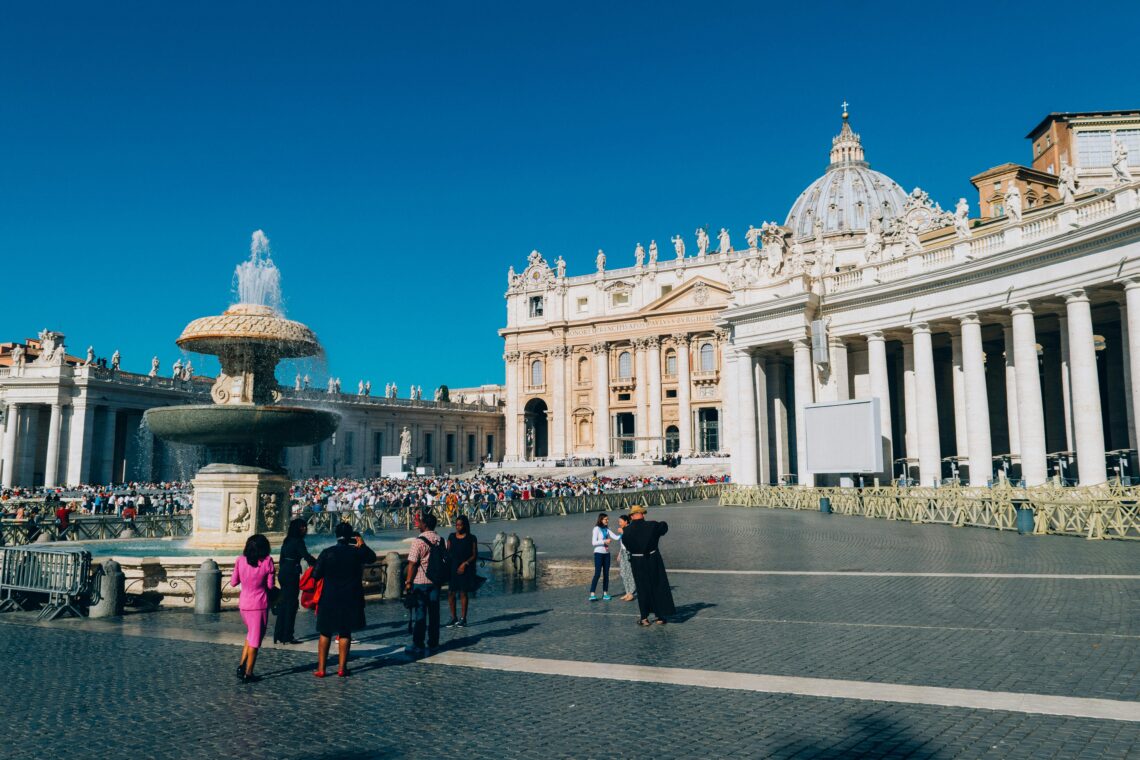
Can the Catholic Church be trusted?
Ronnie Convery looks at the crisis of credibility the institution has experienced in recent decades and examines a new book which offers some painful remedies to cure its malaise.
The Catholic Church has been through the wars recently. Few institutions in society have seen their image crumble so dramatically, especially in countries such as Ireland and the USA, where child-abuse scandals have holed the Church’s credibility below the waterline.
While the work of patching up the ruined vessel of ecclesial respectability goes on in the Vatican and in parish houses across the world, one result of the scandals has been a crisis of faith – not so much on issues of belief but on the question of believability.
How can the Catholic Church speak to the world without being pilloried?
How can Catholic commentators bring their undoubted wisdom to the public square with conviction without being told to ‘go and put your own house in order first’?
This phenomenon of trust in the Catholic Church and the communication crisis it has engendered is the focus of a fascinating new study by Italian academic Giovanni Tridente and Spanish professor Daniel Arasa, who tackle it in a chapter of the new book Reclaiming the Piazza III, just published by Gracewing in the UK.
The authors are blunt: “Probably the greatest of the difficulties and obstacles for successful Church communication is the lack of trust from all sectors of society, starting with Catholics themselves. The ongoing revelations of clerical sexual abuse, their reach and history, have caused a tremendous loss of credibility in the Church. And when there is no trust, it is impossible to communicate, or to do so effectively.
“There is an urgent need – at least at a theoretical and reflective level – to speak to society and the various publics, both baptised faithful and ordinary citizens, in a coherent and above all credible manner.”
Arasa and Tridente don’t stop at diagnosing the Catholic Church’s current illness, they are brave enough to offer the (sometimes unpalatable) medicine of practical solutions – suggesting nothing short of a renewal of journalism and communication theory in general and, more specifically, of the Church’s own communication methods.
The first stage of prescribing any cure is to analyse the patient’s lifestyle, the company he keeps, the environment in which he operates, and here the authors are masterful: “There is no doubt that the technological revolution has improved many aspects of the work of the journalist, from a new ‘closeness’ to events, to the rapid spread of news, uniting worlds, knowledge and skills that in the past were much more complex – and expensive – to navigate.
“Alongside the undisputed and unavoidable progress of journalism – and perhaps precisely because of that – some limitations (indeed problems) have appeared in the profession, which we can group into three macro issues.”
They firstly highlight ‘the disappearance of the specific role of mediation that the journalist normally played between events and the reader’ as a key factor.
They add: “Thanks to smartphones and social media … everyone can become … a news producer, while once most people were passive users. This phenomenon goes by the name of disintermediation, empowered by what is known as ‘citizen journalism’.
Thus, if the journalist is no longer an intermediary, then we are facing a profession that needs to be reinvented and transformed …”
For some, this new landscape represents a democratisation of news, but for others it is a recipe for informative chaos. Arasa and Tridente describe the latter very well: “The increase in the number of people using the web has shown not the growth but the limitation of information platforms. In fact, it is not certain than a greater dissemination of data means deeper understanding of issues and of their ‘meaning’ …
“This phenomenon of overload can be described and defined by the term informative chaos, which goes hand in hand with that of infobesity, in which elements of sensationalism and the desire for ‘scoops’ are also mixed. This does not encourage a calm reflection on the many events we become aware of. Inevitably, this leads to a lack of lucidity and often misjudgements about how things happened, thus leading to wrong choices.
“Associated with all of this, there is a third consequence, which in fact brings together the previous two: misinformation. It might be better to use the term non-information. If the media consumer is not given the right context for an event, and if the story which emerges itself is pulverised along with numerous other stories which appear throughout the day, it is obviously true to say that we have not been given real news at all. Rather we have acquired a mound of bits of news that in the end leave us more confused than ever. The role of news media, on the contrary, should reclaim the role of clarifying ideas for citizens, to help them make responsible choices in their everyday lives.”

So far so good. The media environment has been well described.
But what about the philosophical climate for Catholic communicators trying to restore some credibility to a battered institution?
“If we need to pinpoint a philosophical thought that has eroded – or at least called into question – the Church’s authority, it can surely be identified with the intellectual movement started by René Descartes, in which doubt is postulated as the basis for any human progress. From that moment, the quest for intellectual as well as moral autonomy has grown constantly among individuals and human communities, challenging seriously, at least at the institutional level, any religious group, and certainly the Catholic Church…
“The philosophy of autonomy has become, in the contemporary world, a sociological relativism, in which often truth is neither accepted nor understood. It is in this regard that we most fully understand Cardinal Ratzinger (Pope Benedict XVI) when he spoke of the ‘dictatorship of relativism’.”
Leaving aside philosophical conceptions, there are also practical hurdles which impact negatively on the Church’s media work, as well as the role Catholic journalists play. The authors highlight three: the speed of communications; the emergence of what they call ‘empty language’; and the constant theme of loss of public trust.
“Nowadays, public affairs, issues and situations require answers that the Church is not always able to respond to in good time. The Church’s governance structures and ways of working have a history that cannot be easily changed. Collegiality, time for prayer and reflection, interdisciplinarity … these (among others!) are the Church’s governing styles, which, with some adaptation, will always be needed … However, when confronting today’s ethical questions such as AI or robotics (biotechnology), end-of-life issues or human experimentation, the social debate seems to require an immediate response.”
The authors correctly highlight the Catholic Church’s penchant for using a language which the rest of society, to put it bluntly, no longer understands.
“We refer here not so much to the use of an excessively ‘technical’ language, impossible to decipher for the general audience and only suitable to experts. Instead, we mean a deeper question: the problem of a language that has been emptied of its deep meaning; that is to say, words and concepts that have been eradicated from their anthropological roots. What do our contemporaries understand by words such as family, love, faith, charity, God?
“Certainly they understand different things, and probably many of them not do not coincide with a Christian anthropology.”
As their fellow academic of Catholic communication, Diego Contreras, puts it, in recent times there has been a devastation that requires a ‘cultural reforestation’ of those anthropological human concepts that keep the soil of society stable. The spiritual dimension of the Church’s message will always be difficult to transmit in a secularised environment. Even more if that work of cultural reforestation is not done.
So what is the way forward? The authors find grounds for optimism (yes really!) in recent changes in the way the Catholic Church communicates (not an easy task given the issues outlined above!).
“With regard to the speed of communication, it is fair to say that, in the last decade, the Church has noticeably improved in responding in a proactive way to moments of crisis through the establishment of communication offices or the nomination of spokespersons at local, national and international levels. Of course, more can always be done.
“Nonetheless, the Church should not be afraid of sometimes, where necessary, taking ‘slow’ decisions regarding important human and social issues.
In the same way that slow food is usually healthier than fast food, slow information – when that is required, and not because of a lack of responsibility – can be more efficient than hasty communication.
“The problem of language needs to be approached from an interdisciplinary perspective, and the Church can in this area learn from the diffusion of popular culture – fiction and non-fiction. Effective communication must be easy to understand and at the same time grounded in sound philosophical bases. However, considering the power of emotions in today’s world, a great value should be placed on delivery and style, as a force to foster positive change in society. A readiness to dialogue, respect, openness, and transparency are powerful tools for overcoming prejudices and being able to convey the message desired. Identity and qualified testimony are essential factors here.
“In that sense, Catholics need to be conscious of the real situation of their contemporaries and know how to walk in others’ shoes. Using Pope Francis’s analogy, the Church is a ‘field hospital’ that wants to heal the wounds of those who freely accept her assistance. A merciful, respectful attitude is the most efficient way to bring the Christian message to a pluralistic society.”

In diagnosing the chiaroscuro reality of the Catholic Church’s communications effort Arasa and Tridente act with a surgeon’s precision. But they don’t stop there. They also offer carefully chosen treatments for the sickly patient, which, if taken for the full course of the treatment, should see a significant approval in his condition and the beginnings of a recovery of trust.
The prescription contains three therapies: slowness, a desire to build and positivity.
They call for “a communication that is above all slow, that takes its time both in the search for and understanding of the news – resisting the tyranny of the click and like – and in making articles and reports ‘last’ over time in terms of quality and the ongoing attention of the reader.
“A communication that is constructive, where the motivation is not just writing – or telling – in itself, but encouraging a process of ‘rehabilitation’ of the facts to favour the growth of the people and societies involved.”
Finally, a communication that is positive… “This means not only being able to report ‘in a positive way’ (reframing) events and always looking for that glimmer of beauty even in the worst situations, but also the discovery and promotion of all those good news stories that very often remain hidden because apparently nobody cares to search them out or report on them, remembering, as Pope Francis said in a meeting with journalists, that ‘there is an underground sea of goodness that deserves to be known’.”
But when all is said and done one word recurs again and again … trust.
“The most difficult and lengthy task is to gain the trust of the public. Since trust has been lost to falsity and hypocrisy, the only way to recover it is through coherence of life. Facts, not just words. This is the only way that Catholic media work will be effective: when Catholics communicate what they really live…”
That’s a challenge which may take decades to achieve but is surely the only way back for an institution whose core business is faith.
Like what you’ve read? Consider supporting the work of Adamah by making a donation and help us keep exploring life’s big (and not so big) issues!

